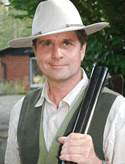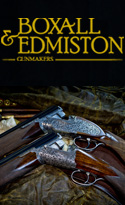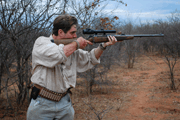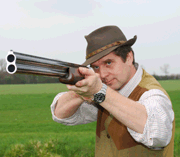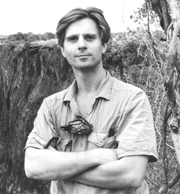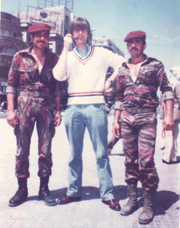Recoil a Battering Subject
As all those who were not asleep in physics should remember: for every action there is an equal and opposite reaction (Newton’s Third Law of Motion). Considered simply, recoil is the motion of a firearm in the opposite direction to that of its projectile. It is affected by the weight of the gun, the weight of the projectile, and, most notably, by muzzle velocity.
The first phase - primary recoil - begins momentarily after the primer is detonated, the ignited propellant rapidly creates an expansion of gas that overcomes the inertia of the shot charge and wad and accelerate them down the barrel. There is also a force of friction and air resistance to overcome. Secondary recoil - the effects of which are much smaller - starts when the ejecta (pellets, wad and burnt powder) leave the barrel and there is a sudden release of gas. The gun is pushed back much like a rocket.
Having adhered to the KISS philosophy thus far, it might now be revealed that recoil is not only about rearwards movement. There is also a rotation about the axis of the shoulder when a gun is fired. This is because the centre line of the bore is above the shoulder line. When this rotation effect occurs, the muzzle/s moves up and the cheek piece of the gun may be brought into abrupt contact with the zygoma of the skull - the ridge of bone extending from the cheekbone to the temporal bone. At the same time the butt sole may slip from the shoulder (especially if it is poorly designed with a very inclined comb or, if the gun is being fired from an awkward or inappropriate position.)
Primary and secondary recoil must also be distinguished from felt or perceived recoil - the experience of recoil by the gun user. Felt recoil is a complex subjective phenomenon involving many variables. Factors affecting felt recoil will include those already mentioned (weight of the gun, projectile weight etc.), the design and fit of the gun stock, the burn rate of the powder, the physique, strength and constitution of the individual, the firing position (firing from a prone position may increase felt recoil because movement is severely restricted - one cannot 'roll with the punches') and, not least, the individual's shooting technique and experience. A gun held loosely or in insufficient contact with the shoulder - a common failing of beginners - will appear to recoil far more than one held more firmly. [Experienced shots, however, do become expert at absorbing recoil through the hands]
We must also distinguish between the subjective experience of recoil and the actual effects of it. They are not necessarily synonymous. For example, a situation could be conceived where an individual was being damaged by recoil without being aware of it at the time of firing. Excessive recoil in firearms has certainly been recognised as a problem for hundreds of years. Moreover, different users may react quite differently to the same gun and cartridge combination. Some people are clearly more sensitive to recoil than others. Poor technique or unsuitable equipment are usually to blame for recoil problems, but, not in every case.
Many, if not most, the great authors on the shotgun have referred to recoil. Edgar Harrison, for example, writes succinctly on the subject in his 1906 work Dissertation upon Guns and Shooting. In an era of the great driven shoots, he noted: "Nowadays recoil must be lessened, as the number of shots fired per day increases. Recoil is high with a light gun, a big charge of shot, and a high velocity, and when the powder used requires a large number of grains to the charge. Conversely, recoil is at its least with a heavy gun, a small charge of shot, a low velocity, and a powder whose weight of charge is small." Major Burrard considers the question in much more depth in the Modern Shotgun, first published 1932 (and his comments are well worth reading if you want to explore this subject further). These are but two examples amongst hundreds in shooting literature.
There has also been some academic enquiry into the effects of recoil. In 1962, Ralph Hoge, inventor of the 'Hydro-Coil' stock and Dr C.G.Hutter published the results of a series of experiments on the effects of recoil on the gun user. Their conclusion was that recoil was more dangerous than had previously been thought. Dr. Hutter believed that recoil placed a potentially serious strain on both the pulimonary and respiratory systems. He also stated that the impact trauma caused by recoil damaged the tissue behind the gunstock. He was especially concerned about the effects on female shooters and children.
In 1974 Dr William Wanamaker of the Department of Neurology of the University of Wisconsin Medical Centre published a paper (Arch Neurol/Vol 31 Sept. 1974) on 'Firearm Recoil Palsy'. He describes the cases of three patients who suffered injury to the upper trunk of the right bachial plexus from recoil. Two of the patients abstained from shooting and recovered, the third continued to shoot and his deficit became permanent. In his final comments Wanamaker noted:
"Firearm recoil in an average 12 bore shotgun may range from 0.8 to 2.5 joules...With each shot...the rearward acceleration or recoil force, must be dissipated by motion or compression of shoulder structures or both and acceleration of the trunk backwards. Thus, with each shot, the recoil causes a violent retraction or rearward motion of the lateral part of the clavicle...Factors predisposing to or aggravating trauma must exist since most people who shoot firearms are not injured...Treatment of brachial plexus injury from firearm recoil depends on the recognition of the traumatizing force. The patient should abstain from shooting, at least until signs and symptoms of nerve injury and irritation have abated."
Academic research has also been undertaken in Britain in more recent years at the Impact Research Centre of the University of Liverpool under the auspices of Dr R.S.Birch (who has published a number of articles on the subject in the shooting press). One interesting product of this was that increasing forcing cone length made no observable difference to recoil and back boring only very slight differences. Though this may well be true, my impression is that internal bore diameter does make a difference to felt recoil. On testing guns, I have frequently noted that those with tight bores (say 18.3mm) have appeared to kick more than those with wider dimensions.
Because of particular concerns about recoil in the case of those who shoot tens of thousands of cartridges a year, there has been a progressive reduction in the maximum permitted loads in International and domestic clay pigeon shooting competition in recent years. The first reduction was made by UIT (the International Shooting Union - the body which controls Olympic clay pigeon shooting) in 1976. Others followed in 1989 and 1993. Similar initiatives have been made by domestic clay pigeon shooting associations.
It is well known in shooting circles that excessive recoil can lead to flinching - a sudden muscle tension or spasm in anticipation of recoil - and to neck and shoulder problems (especially in those who shoot a great deal). Any professional shooting instructor will have heard clients complaining of recoil on hundreds of occasions: a significant part of my instructional work certainly involves altering firearms or technique to reduce observed or felt recoil.
Modern cartridge makers are especially conscious of the potential problem of recoil (and the market demand for low recoiling cartridges) and have developed cartridges which allow for high velocities but relatively low felt recoil. This is achieved by various means which include, careful propellant and primer selection and development, the introduction of shock absorbing base wads, compressing plastic wads, and, not least, by the fashion for reduced cartridge payload. As far as competition clay pigeon shooting is concerned, these have become much more popular in recent years. They are used by many through choice, not just because they are stipulated by the rules of certain competitions.
Similarly, gun designers are well aware of the problem of recoil. There has been much experimentation to reduce the actual and felt recoil of firearms in recent years. The trend in the military has been towards much smaller cartridges for rifles. The .303 and .308 have now been replaced with the much softer shooting, 5.56mm. Shotgun manufacturers have experimented with bore size and bore geometry as a means of reducing felt recoil and many of the most modern shotguns use a gas operated system which bleeds off propellant gas from the chamber to cycle the action.
Dozens of devices or modifications have been marketed over the years as a means to reduce felt recoil. These include recoil pads, muzzle brakes, barrel porting, mercury and mechanical 'recoil' reducers, lengthened forcing cones (the funnel like constriction which leads from the bore of a shotgun to the main bore), the back boring of barrel (widening the bore size), pneumatic, sprung or hydraulic telescopic stock conversions, and padded cheek pieces. Some of these devices have a negligible or non-existent effect, some are well proven (e.g. recoil pads made of modern shock absorbing materials).
Recoil, as will be clear by now, is quite a complex subject if considered technically. Let us end by trying to keep it simple! The commonest causes of excessive felt recoil are poor mounting technique, poor stock design and/or fit (too short a stock or one with an excessively inclined comb) and unsuitable cartridge-gun combinations as noted. The simplest cures are light loaded, light payload, cartridges and the fitting of one of the modern high-tech polymer pads such as the Kick-Eez. If you shoot clays or pigeons consider a gas-operated semi-automatic if all else fails. Although it is unwise to ignore the effects of recoil and it makes sense to keep it to minimum, the vast majority of Shots quite capable of firing thousands, if not tens of thousands, of cartridges a year without harm provided technique is sound, the gun fits and the gun and cartridge combination is suitable.


